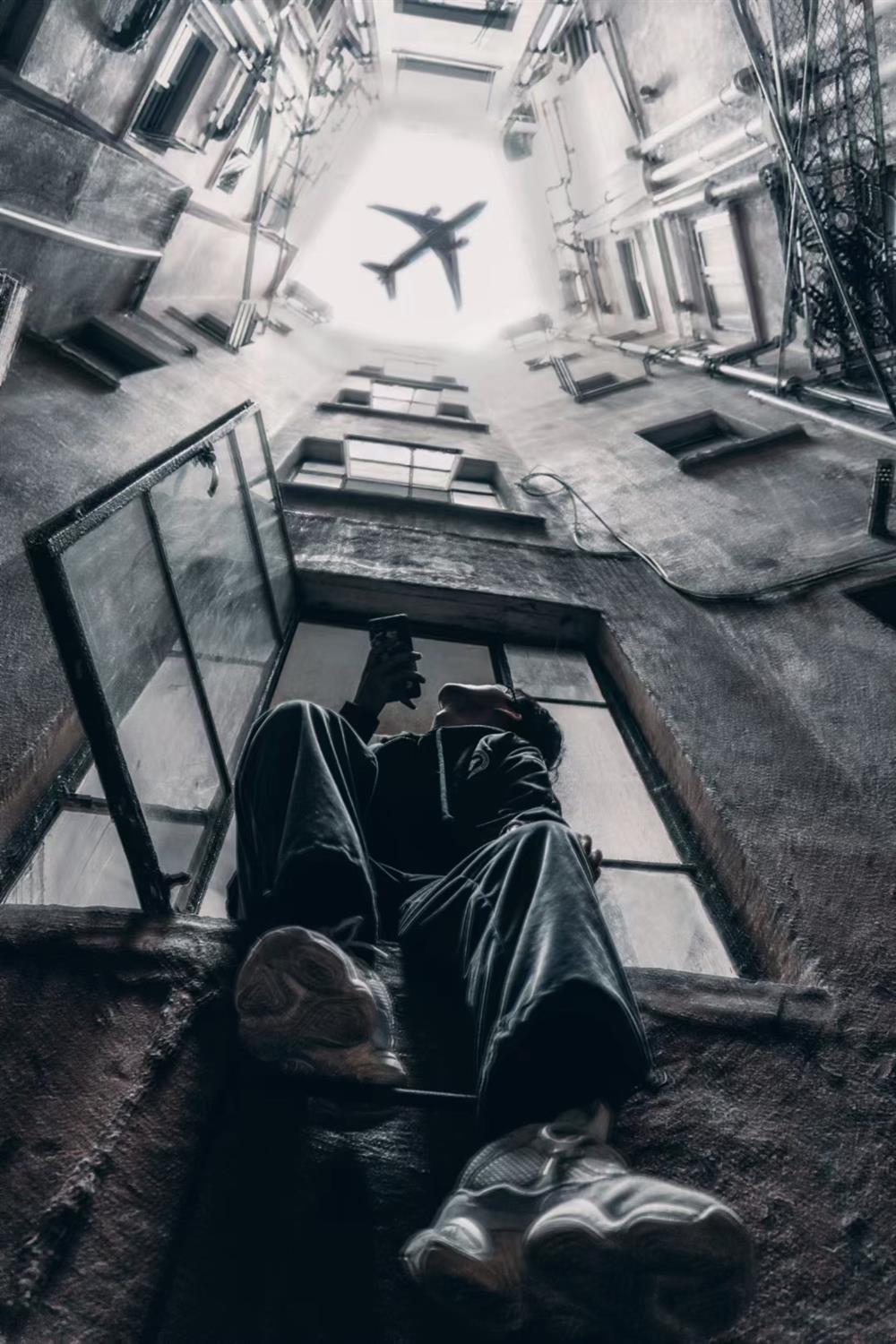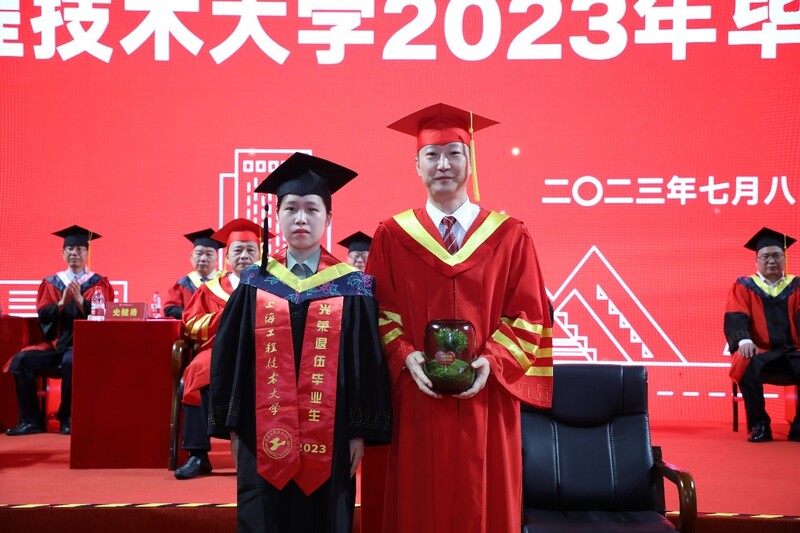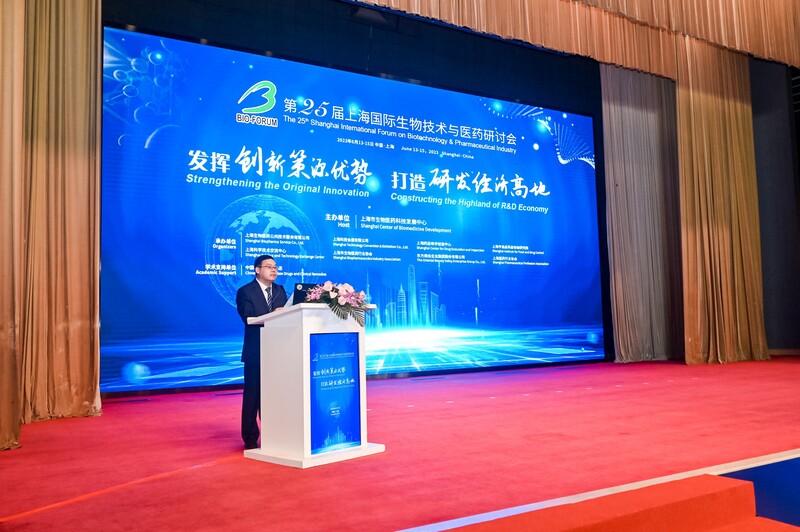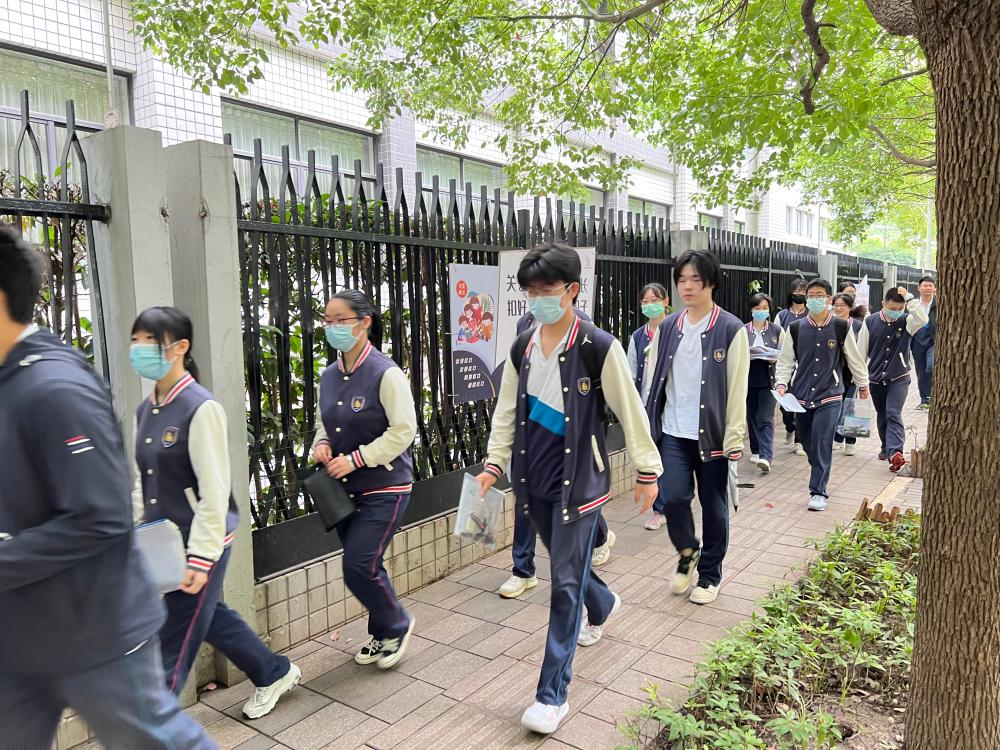Leaving behind the physics equation named after the Chinese, the master is at Fudan | He has taught 7 "two bombs and one satellite" pioneers
John Bardeen, who won the Nobel Prize in Physics twice, once said when giving a report at the Shanghai Science Hall in the early 1980s: "If Lu Hefu had not left the United States, he would definitely have won the Nobel Prize in Physics."
This professor at Fudan University has taught classes for seven pioneers of the "two bombs and one satellite"; he is known as "the first person to publicly reveal the secrets of the atomic bomb"; his doctoral thesis is considered to involve top-secret materials for the creation of the first batch of atomic bombs. The U.S. military banned it; "Lu Hefu's Irreversibility Equation" is a rare equation named after a Chinese scientist in the history of world physics.
Lu Hefu with John Bardeen and his wife Wu Runhui.
During the Anti-Japanese War, he negotiated with bandits and conquered them with his patriotic sentiments; he was a master of Peking Opera, and he could easily master more than 40 plays of the Tan School...
Today is the 110th anniversary of the birth of Lu Hefu, the “Father of Chinese Nuclear Energy” and an academician of the Chinese Academy of Sciences. Let us walk into his legendary life together.
In 1914, Lu Hefu was born into an intellectual family in Shenyang, Liaoning. His father, Lu Jinggui, was sent to study in the United States by his father-in-law and was a transportation machinery expert. He and Zhang Zuolin were sworn brothers; his mother, Cui Keyan, studied in Tokyo with Qiu Jin. Lu Hefu was talented since he was a child. When he was in high school, his family bought a car. He learned to drive a car by himself by reading "Automobile Science".
After graduating from the Department of Physics of Yenching University, Lu Hefu came to the United States to study for a master's degree at the University of Minnesota in 1936. At that time, many famous scientists had very different measurement results of the abundance ratios of lithium 7 and lithium 6 isotopes, so he was determined to overcome this problem. Unable to buy the mass spectrometer he needed, he made his own. Laboratory No. 77 facing the street witnessed his efforts. For a year, he spent almost all day doing experiments. Using an experimental method he invented, he accurately measured the natural abundance ratio of lithium 7 and lithium 6 for the first time in the world to be 12.29. This value is a key data required for the development of a hydrogen bomb. It was selected as the accurate value on the isotope table and is recognized by the international physics community. At that time, the American "Minneapolis Daily" published relevant news on its front page with the title "Chinese are weighing atoms."
In the 1930s, the phenomenon of uranium-235 nuclear fission was discovered. Compared with boron 11, boron 10 has a large neutron absorption cross-section. The content of boron 10 will affect the progress of the self-sustaining chain nuclear fission reaction, which is one of the key issues in the development of atomic bombs and nuclear reactors. Lu Hefu, who continues to challenge scientific problems, has new research goals. After three years of hard work, he successfully separated microgram-level boron 10 and boron 11 using a new self-made high-intensity mass spectrometer. The boron element is equivalent to the "control pump" of nuclear reactions. Boron 10 will absorb neutrons, thereby interrupting the nuclear reaction. Only by removing boron 10 can the nuclear explosion continue. In 1941, he received his doctorate from the University of Minnesota based on this research paper. However, the research results were regarded as top-secret materials related to the construction of the first atomic bombs and nuclear reactors, and were blocked by the US military. It was not made public until 1950 in summary form.
In 1945, the United States dropped an atomic bomb on Hiroshima, Japan. In 1946, Lu Hefu sent the method of estimating the critical value of uranium-235 atomic bombs that he had devoted himself to research to "American Physical Monthly" with the title "About the Physics of Atomic Bombs". Since the theory related to the atomic bomb was still classified as "secret," the editor-in-chief of the journal had to submit the article to the U.S. Atomic Energy Commission for approval. It was only a year later that it was allowed to be published in the last issue in 1947. Lu Hefu was therefore called "the first scientist to publicly reveal the secrets of the atomic bomb" by foreign scholars. What is commendable is that he put forward the concept of peaceful use of nuclear energy: "Our high hopes for nuclear energy are not military but to enhance the happiness of the world..."
In 1981, Lu Hefu and Professor Neil, who separated uranium-235 for the first time.
After Lu Hefu returned to China in 1941, due to very limited experimental conditions, he turned his research direction to theoretical physics, which was not easy for an experimental physicist. Once, he threw a stone into the calm West Lake and watched the circles of ripples gradually disappear from dense to sparse. He suddenly had inspiration. It turned out that he had long questioned the basic equations of classical fluid dynamics. Inspired by ripples, he thought that after the fluid is deformed by external forces, it will never completely return to normal. Some of the energy must be gradually transformed and irreversibly changed. . After repeated calculations, from then on, an equation named after a Chinese scientist was born rarely in the history of world physics - the "Lu Hefu Irreversibility Equation".
In 1995, "A Direct Verification of Mach's Principle" written by the 81-year-old Lu Hefu and his disciple Wang Shiming was published in the American "Galileo Electrodynamics". The editor-in-chief of the magazine commented that this paper "opened up a new direction to challenge Einstein." However, what is sad is that Lu Hefu died suddenly two years later, leaving behind 8 major outlines and 44 research progress, and the published papers were only one-tenth of his research content.
Until the last few days of his life, he discussed cutting-edge issues in physics with friends and students who came to visit him.
"My teacher said that Mr. Lu's doctoral thesis is the best he has ever read." Shen Hao, director of the Institute of Modern Physics at Fudan University, told the Liberation Daily·Shangguan News reporter that she learned from Mr. Lu's knowledge When it comes to the beauty of physics, "His paper "On the Physics of the Atomic Bomb" only has one piece of paper. It is really the more profound and simpler it is."
"Know and tell others, tell the truth and tell the truth, this is benevolence and trustworthiness." This is what Lu Hefu has followed throughout his life.
He has taught at Sun Yat-sen University, Guangxi University, Zhejiang University, and Fudan University. Fudan University is the university where he has worked the longest. No matter where he teaches, Lu Hefu is recognized as "famously good at giving lectures."
In 1952, he took a "Statistical Physics" class at Fudan University, compiled his own teaching materials, and his lectures were fascinating. At first, it was only taught to students of this grade. Later, students from other grades also came to observe. Sometimes the number of students attending the lectures reached several hundred.
In January 1955, according to the international situation at the time, our country decided to develop atomic energy science, and Lu Hefu entered the top-secret "546" training class to teach. He is responsible for two courses: neutron physics and accelerator principles, and is the only teacher who teaches two courses. These two courses were very experimental, but the conditions at the time were simple and many experiments could not be carried out. Lu Hefu's explanation in simple terms makes people feel like a trip to the laboratory. In 1956, the 42-year-old Lu Hefu was selected as a first-level professor by the Ministry of Education. He was the youngest first-level professor in the country at that time. During the two years of teaching in the "546 Training Class", he trained a large number of nuclear science talents, including the seven later pioneers of the "two bombs and one satellite".
Lu Hefu took a group photo with Qian Sanqiang, Zhou Guangzhao, Peng Hengwu and others.
In 1958, Lu Hefu returned to the Department of Physics of Fudan University as the director of the theoretical physics teaching and research group. He later participated in the preparation of the Department of Atomic Energy, which was only codenamed "Department of Physics II" to maintain confidentiality.
Lu Hefu cherished young scholars very much. Zhang Shouye, his first graduate student at Fudan University, often went to his home for advice. Every time Lu Hefu would stay at home for dinner and specially add some delicious dishes. At that time, Zhang Shouye's research topic involved extremely tedious theoretical calculations. Lu Hefu went to the school leaders to explain the significance of the research. The school immediately provided strong support and bought 40 hand-cranked computers and staffed them with 40 people to operate them. The huge calculation was carried out for a whole year, and it was consistent with the experimental results, but there were some deviations. At that time, a well-known American physicist came to Shanghai to give lectures. Lu Hefu took Zhang Shouye to consult and revised and improved the paper. A generation of masters devoted so much effort to their students, which Zhang Shouye will cherish throughout his life.
"Mr. Lu is our teacher's teacher and has never taught us a class, but he is very clear about the research we are engaged in. Whenever graduate students who want to study abroad ask him to write letters of recommendation, he kindly agrees." Shen Hao told Jiefang Daily·Shangguan News reporter.
[I missed the Nobel Prize and never expressed regret]
Lu Hefu's love for his motherland was fierce and deep.
In the winter of 1931, Tianjin's "Ta Kung Pao" launched a fundraiser to support the Songhu Anti-Japanese War. When 17-year-old Lu Hefu learned about this, he ran home to mobilize his mother to donate 100 yuan. At that time, one yuan could buy two tons of flour. In the winter of 1935, Lu Hefu participated in the "December 9th" student patriotic anti-Japanese movement.
On the third day of their wedding in 1941, Lu Hefu and his wife Wu Runhui left the University of Minnesota, and then arrived in Hong Kong after more than a month of bumpy sea travel. At that time, Lu Hefu was working on an important topic with two American physicists. Many people tried to persuade him to stay, saying it would be a pity to give up the research at this time. But he had already decided to leave. “No matter how great my research achievements are, if they cannot be used by my motherland, it will be meaningless to me.”
Wedding photos of Lu Hefu and his wife Wu Runhui in the United States.
Later, the two American colleagues won the Nobel Prize in Physics for this research. "As far as I can remember, my father never expressed any regrets about this matter," Lu Hefu's second son Lu Yongliang told the Jiefang Daily Shangguan News reporter.
At that time, Hong Kong Kai Tak Airport stipulated that each person's luggage should not exceed 20 kilograms, but the books and materials that Lu Hefu brought back from the United States were far more than 20 kilograms. He asked his wife to sew many pockets inside the coat, put books in them, and then wear them. The customs officers who asked about the whole story were in awe of the scientist and made an exception to let him go.
In order to escape the war, Lu Hefu took his family all over the country after returning to China. Even if he prepared lessons under a kerosene lamp and chopped firewood for cooking, he never complained. Once, while traveling with teachers and students of Guangxi University to the junction of Guangxi and Guizhou, he suddenly encountered bandits. He volunteered to negotiate with the bandit leader. After hearing the story of his return to China to teach, the other party was greatly moved. Not only did he serve wine and food, but he also presented a flag. Along the way, the bandits saw the command flag and gave way.
After the founding of New China, Lu Hefu was so excited that he even changed his past habit of teaching mostly in English and taught all classes in Chinese to celebrate.
For his family, his love was reserved but equally fierce.
After his wife Wu Runhui contracted Alzheimer's disease, Lu Hefu often asked the nanny to cook more of his wife's favorite meals, and helped his wife tuck her quilt in the middle of the night...
For the younger generation, his principle is "only care and don't interfere."
"Dad treats us daughters-in-law better than he treats his son. We have been under the same roof for many years, and I have never seen him lose his temper with anyone. He doesn't talk much. In addition to singing Peking Opera, he writes in the study all day long." Lu Hefu Ma Kaigui, the second daughter-in-law, told the Liberation Daily Shangguan News reporter.
A still from Lu Hefu in the Peking Opera "Silang Visits His Mother".
Every time he goes to a meeting of the CPPCC or Jiusan Society, Lu Hefu always goes downstairs in advance, not letting the driver wait. He treats the nanny at home as a granddaughter. He teaches her English in his free time and buys her bus tickets when he returns home.
On February 13, 1997, 83-year-old Lu Hefu wrote the last diary entry in his life. He was laid to rest in Shanghai's Tianmashan Cemetery, which was the cemetery he personally selected during his lifetime because "unfettered thinking" was the way of thinking he admired.





